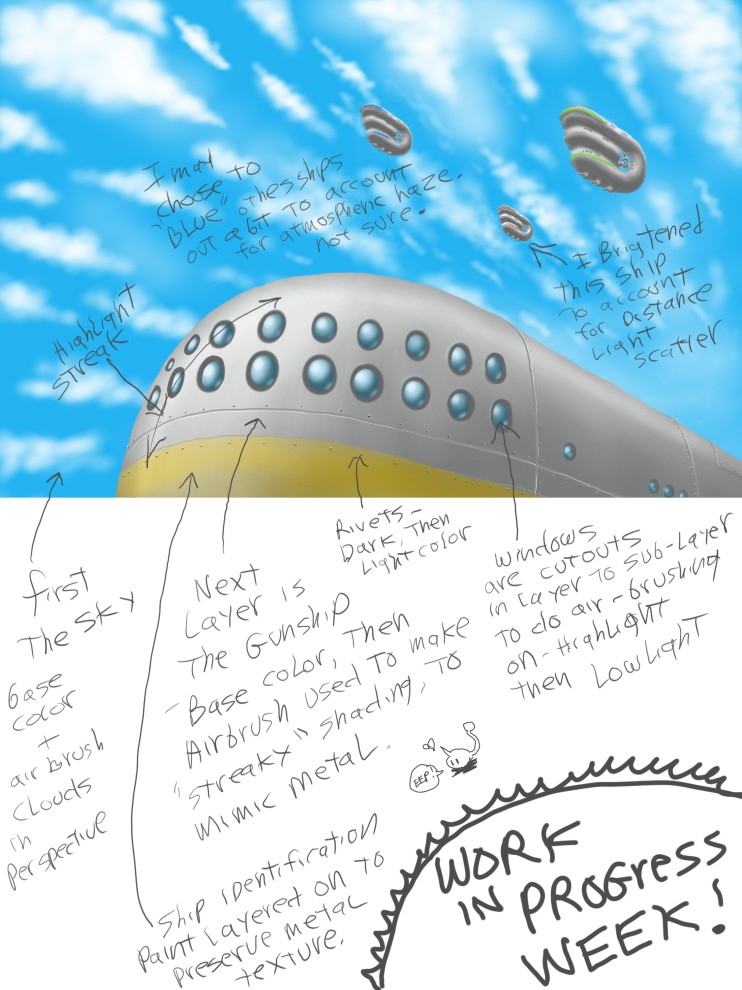
PASTEL
DEFENDER HELIOTROPE
How
The Comic Is Made, Page 2

Here we begin painting, and start with the sky, which is washed with blue, on the bottom layer, the Background. Next, I use the airbrush tool (in various sizes) to paint in the clouds in perspective, shrinking them and making more of them as they recede into the distance. The airbrush is an ideal tool for many uses, and is especially suited to making nice fluffy clouds that have a vaporous look to them. All that is used here is white on the blue, and by judicious use of the airbrush, the background blue creates all the shape and form the clouds require.
On the next layer, I begin to draw the ships, as seen in this annotated image:

The ships, painted on the next layer up from the background, were done first by using a paintbrush tool to paint a basic solid shape in very dark grey, then the airbrush was used with a lighter gray to provide highlight, thus giving the ship curvature, shape, form and substance. I applied the light gray in a streaky way so as to simulate the natural grain of metal. I think this looks more real than if I had done a very smooth and regular gradient of color. Metal is not perfect, and unless it is very shiny and chrome, has a texture to it which affects how light reflects off of it.
To do the color paint on the ships, I used the airbrush over the metal of the ship on yet another floating layer, so as to preserve the texture of the metal surface. Then, because the color was on a floating layer, I could just erase any spill-over to exactly follow the line of the ship, allowing the same result as using a frisket (a paper edge guard) with a real airbrush. This technique of making new layers and then erasing any mess or spill is a universal part of the way I paint. It is unbelievably useful.
Most structures use three main colors in my art, a base color which is medium dark, a lowlight of darker color, and a highlight of lighter color. However, for some materials it is possible to get away with just two main colors, a dark base and a light highlight. Dull metals such as aluminum, or tin, or steel can work with this. Organic and natural materials often require the full three main shades, to add depth.

By
Jennifer Diane Reitz
![]()
A
Part Of Jenniverse.com
All
Website Contents, including all characters,
images,
artwork, text, and any other contents are
Copyright
© 2004 by Jennifer Diane Reitz
All
Rights Reserved Worldwide

Anti-Spam
Address Image
To
contact Jennifer you may use either of the above addresses.
You
may have to type them in yourself, if your browser does
not
support Javascript. Otherwise, click on the button!
LINK
FREELY
You
may link to this site freely!
You
may FREELY use any JENNYVERSE title image as a link button!